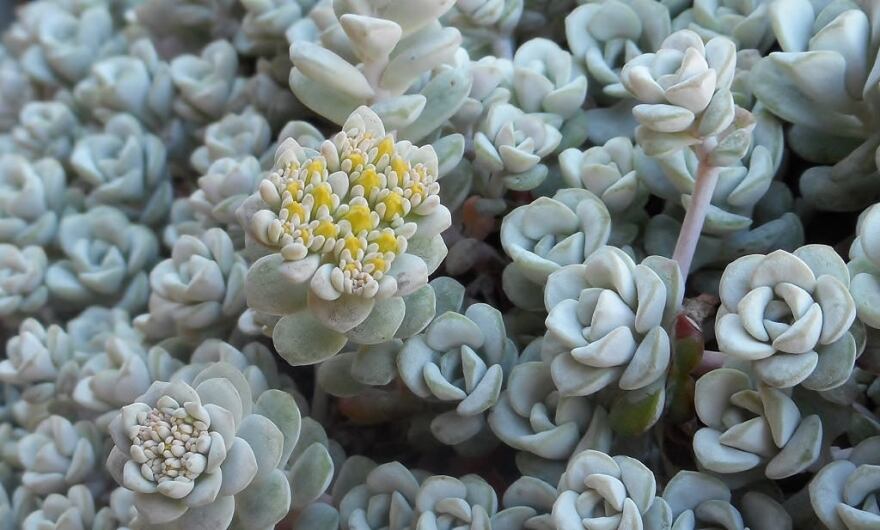This common flower's botanical name means “to sit,” probably for the way it creeps along rocks. It is also called rocky stonecrop in England for the way it's perched on cliffs. We know it as sedum.
Sedums have enjoyed a revival of late. They’re popular in gardens and planted on rooftops, like at the Connecticut Science Center in Hartford, because of their heat and drought tolerance and love of the sun and well drained soil.
They mostly fall into two categories: creeping types, and one-to-two-foot-tall vertical types. Sedums have fleshy, succulent, sometimes colorful leaves, and small flowers that form in packed clusters with colors such as white, pink, yellow, red, and purple.
The tall varieties tend to be fall bloomers. Autumn Joy is probably the most common of this type. Frosted Fire has pink flowers and variegated white and green leaves. Purple Emperor has maroon-red leaves and stalks, with light purple-colored flowers.
Low-growing sedums bloom mostly in spring and early summer. These include Eclair with white flowers, SunSparkler Cherry Tart with red foliage and pink flowers, and Sweet and Sour Russian sedum with yellow flowers and green and white leaves.
Even though sedums enjoy sun, some of the creeping types will grow fine in part shade. Grow the creepers over rock walls, in containers and in the front of flower borders.
Plant tall varieties with other fall bloomers such as rudbeckia and dwarf asters. Tall sedums can get leggy and flop over, so cage them up and periodically divide the plants in spring to reinvigorate them and make more plants.





